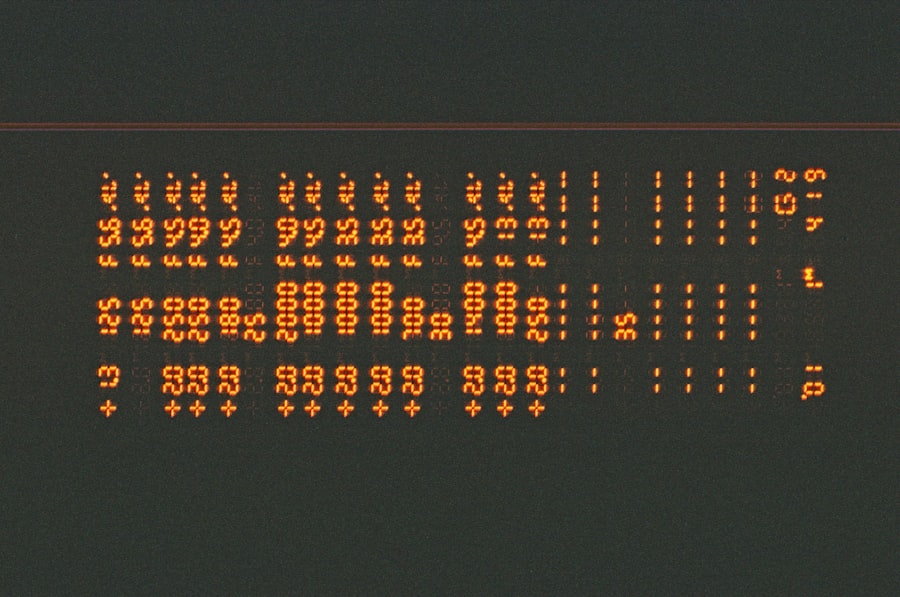The quest to understand the cosmos has long captivated the human imagination, leading to the intriguing concept of alien signals. These signals, often theorized to be communications from extraterrestrial civilizations, represent a tantalizing possibility that humanity is not alone in the universe. The idea of receiving a message from another intelligent species stirs both excitement and curiosity, prompting scientists and enthusiasts alike to explore the vastness of space for signs of life beyond Earth.
As technology advances, the search for these signals has become more sophisticated, allowing researchers to sift through the noise of the universe in hopes of uncovering a meaningful communication. The allure of alien signals lies not only in their potential content but also in what they signify about humanity’s place in the universe. The prospect of discovering that intelligent life exists elsewhere raises profound questions about existence, purpose, and the future of human civilization.
As scientists embark on this journey, they are not merely searching for signals; they are seeking to understand the very fabric of reality and our connection to the cosmos. This exploration is as much about understanding ourselves as it is about understanding others.
Key Takeaways
- Alien signals refer to any form of communication or transmission from extraterrestrial civilizations, which may include radio waves, light signals, or other forms of electromagnetic radiation.
- The search for extraterrestrial intelligence (SETI) involves using various methods and technologies to detect and decipher potential alien signals from outer space.
- Decoding alien signals requires a deep understanding of mathematics, physics, and other scientific principles to interpret and make sense of the information contained within the signals.
- Tools and techniques for deciphering alien signals include advanced computer algorithms, signal processing software, and large radio telescopes to capture and analyze incoming signals.
- Common misconceptions about alien signals include the idea that they are always intentional messages, when in reality they could be natural phenomena or other sources of interference.
Understanding the Search for Extraterrestrial Intelligence (SETI)
The Search for Extraterrestrial Intelligence (SETI) is a scientific endeavor dedicated to detecting signs of intelligent life beyond Earth. Established in the 1960s, SETI employs a variety of methods to scan the skies for radio waves and other forms of electromagnetic radiation that could indicate the presence of advanced civilizations. The fundamental premise behind SETI is that if intelligent beings exist elsewhere in the universe, they may be attempting to communicate, and it is humanity’s responsibility to listen.
SETI’s approach is grounded in the belief that technological civilizations would likely use radio waves as a means of communication, similar to how humans have developed radio technology. By utilizing powerful telescopes and sophisticated algorithms, SETI researchers analyze vast amounts of data collected from space, searching for patterns or anomalies that could suggest artificial origins. This search is not limited to any specific region of space; rather, it encompasses a wide array of stars and galaxies, reflecting the vastness of the universe and the potential for life to exist in myriad forms.
The Basics of Decoding Alien Signals

Decoding alien signals involves a complex interplay of science, technology, and creativity. At its core, the process begins with identifying a signal that stands out from background noise. Researchers must differentiate between natural cosmic phenomena—such as pulsars or quasars—and potential artificial signals that may indicate intelligent life.
This initial step requires advanced filtering techniques and a keen understanding of astrophysics. Once a signal is identified as potentially artificial, the next challenge is deciphering its content. This task is akin to solving a puzzle without knowing the picture on the box.
Scientists must consider various factors, including the signal’s frequency, modulation patterns, and duration. They often draw upon linguistic principles and mathematical theories to hypothesize what an extraterrestrial message might look like. The decoding process is not merely technical; it also demands an imaginative leap into what forms communication might take beyond human experience.
Tools and Techniques for Deciphering Alien Signals
| Tool/Technique | Description | Advantages | Disadvantages |
|---|---|---|---|
| Radio Telescopes | Used to detect and analyze radio waves emitted by alien civilizations. | Can detect signals from distant sources. | May be affected by interference from Earth-based sources. |
| Signal Processing Algorithms | Used to analyze and decipher complex alien signals. | Can identify patterns and anomalies in signals. | May require significant computational resources. |
| Machine Learning | Utilized to recognize and interpret non-human communication patterns. | Can learn from large datasets of alien signals. | Dependent on the quality and diversity of training data. |
| Cryptanalysis | Applied to decode encrypted alien messages or codes. | Can potentially reveal hidden meanings in signals. | May be challenging without knowledge of alien encryption methods. |
The tools employed in the search for alien signals have evolved dramatically over the years. Initially reliant on simple radio receivers, modern SETI efforts utilize powerful radio telescopes equipped with advanced signal processing capabilities. Instruments like the Allen Telescope Array and the Green Bank Telescope allow researchers to scan vast swathes of the sky simultaneously, increasing the chances of detecting a signal.
In addition to hardware advancements, software plays a crucial role in analyzing incoming data. Machine learning algorithms and artificial intelligence are increasingly being integrated into SETI research, enabling scientists to sift through enormous datasets more efficiently than ever before. These technologies can identify patterns that may elude human observers, enhancing the likelihood of discovering meaningful signals amidst cosmic noise.
The combination of cutting-edge technology and innovative methodologies represents a significant leap forward in humanity’s quest to decode potential messages from extraterrestrial civilizations.
Common Misconceptions about Alien Signals
Despite the growing interest in alien signals, several misconceptions persist that can cloud public understanding of this scientific pursuit. One prevalent myth is that SETI researchers are simply waiting for a clear message from aliens, akin to receiving a postcard from outer space. In reality, the search is far more complex and nuanced; researchers are often sifting through vast amounts of data without any guarantee of finding anything at all.
Another common misconception is that any detected signal must be an unequivocal sign of extraterrestrial intelligence. In truth, many signals can be misinterpreted or attributed to natural phenomena. For instance, certain pulsating stars can emit regular signals that might initially appear artificial but are entirely natural in origin.
This highlights the importance of rigorous scientific methodology in distinguishing between genuine extraterrestrial communications and coincidental cosmic events.
The Role of Mathematics and Science in Decoding Alien Signals

Mathematics serves as a foundational tool in the quest to decode alien signals. The language of mathematics transcends cultural barriers and provides a universal framework for understanding complex concepts. Researchers often rely on mathematical models to analyze signal patterns and determine their likelihood of being artificial.
Science also plays an integral role in this endeavor by providing a systematic approach to inquiry. The scientific method guides researchers in formulating hypotheses, conducting experiments, and analyzing results.
As scientists continue to explore the cosmos, their reliance on mathematics and scientific principles will remain crucial in deciphering potential messages from beyond Earth.
The Impact of Deciphering Alien Signals on Humanity
The successful decoding of an alien signal would have profound implications for humanity. Such an event could fundamentally alter our understanding of life and our place in the universe. The realization that intelligent beings exist beyond Earth would challenge long-held beliefs and prompt philosophical inquiries about existence, consciousness, and morality.
It could foster a sense of unity among humanity as people grapple with the implications of shared existence with other intelligent life forms. Moreover, contact with extraterrestrial intelligence could catalyze advancements in technology and science. The knowledge gained from deciphering alien signals might lead to breakthroughs in fields such as communication, energy production, and even medicine.
The potential exchange of ideas and technologies could usher in a new era of innovation and collaboration among nations on Earth, driven by a shared goal of understanding our cosmic neighbors.
The History of Alien Signal Decoding
The history of decoding alien signals dates back several decades, with early efforts rooted in the post-World War II era when radio technology began to flourish. In 1960, astronomer Frank Drake conducted one of the first systematic searches for extraterrestrial signals using a radio telescope at the National Radio Astronomy Observatory in Green Bank, West Virginia. This marked the beginning of formal SETI initiatives aimed at detecting signs of intelligent life.
Over the years, various projects have emerged within SETI research, each contributing to the collective knowledge surrounding alien signals. The Arecibo message sent in 1974 was a notable milestone; it was a binary-encoded message aimed at potential extraterrestrial civilizations near the globular star cluster M13. While it was primarily symbolic, it demonstrated humanity’s willingness to reach out into the cosmos.
As technology advanced, so too did methods for detecting and decoding signals, leading to an ongoing evolution in how researchers approach this enigmatic field.
Challenges and Limitations in Decoding Alien Signals
Despite significant advancements in technology and methodology, challenges remain in decoding alien signals effectively. One major hurdle is distinguishing between genuine extraterrestrial communications and natural cosmic phenomena that can mimic artificial signals. The vastness of space presents another challenge; even if a signal is detected, determining its source can be incredibly difficult due to the immense distances involved.
Additionally, there are limitations inherent in current technology that may hinder progress in this field. While modern telescopes are powerful tools for scanning the skies, they still have constraints regarding sensitivity and resolution. As researchers strive to improve their capabilities, they must also contend with budgetary constraints and competing scientific priorities that can impact funding for SETI initiatives.
Ethical Considerations in Deciphering Alien Signals
The search for alien signals raises important ethical considerations that must be addressed as humanity ventures further into this uncharted territory. One significant concern revolves around how humanity would respond upon receiving a signal from an extraterrestrial civilization. Would it be prudent to respond?
What message should be sent back? These questions highlight the need for careful deliberation regarding communication protocols with potential extraterrestrial intelligences. Moreover, there are ethical implications related to how information about alien signals is disseminated to the public.
Scientists must balance transparency with caution; premature announcements could lead to misinformation or unwarranted panic among populations unprepared for such revelations. Establishing guidelines for responsible communication about discoveries related to alien signals will be essential as researchers continue their work.
Future Prospects in the Field of Alien Signal Decoding
Looking ahead, the future prospects for decoding alien signals appear promising yet uncertain. As technology continues to advance at an unprecedented pace, researchers are likely to develop even more sophisticated tools for detecting and analyzing signals from space. Innovations such as quantum computing may enhance data processing capabilities, allowing scientists to sift through vast datasets more efficiently than ever before.
Furthermore, international collaboration will play a crucial role in advancing SETI research. As countries recognize the significance of exploring extraterrestrial intelligence together, collaborative efforts may lead to shared resources and knowledge that can accelerate progress in this field. Ultimately, while challenges remain, humanity’s relentless curiosity about the cosmos will drive continued exploration into the possibility of deciphering alien signals—an endeavor that holds profound implications for understanding life beyond Earth and our place within the universe itself.
Decoding alien signals is a fascinating and complex endeavor that has captured the imagination of scientists and enthusiasts alike. Understanding these signals requires a combination of advanced technology, interdisciplinary knowledge, and a bit of creativity. For those interested in exploring this topic further, an insightful article on the subject can be found on XFile Findings. This article delves into the methodologies and challenges associated with interpreting extraterrestrial communications. To read more about these intriguing concepts, visit the article on XFile Findings.
🤯WATCH THIS! The Lost Tape: CIA Psychic Predicted Alien’s Voice
FAQs
What are alien signals?
Alien signals are electromagnetic waves or other forms of communication that are believed to originate from extraterrestrial civilizations.
How can we decode alien signals?
Decoding alien signals involves using advanced technology and scientific methods to analyze the patterns, frequencies, and content of the signals in order to understand their meaning and origin.
What are some of the challenges in decoding alien signals?
Challenges in decoding alien signals include the vast distances the signals may have traveled, the potential for signal degradation, and the possibility that the signals may be using communication methods or languages that are completely unfamiliar to us.
What technologies are used to decode alien signals?
Technologies used to decode alien signals include radio telescopes, signal processing algorithms, artificial intelligence, and advanced computer systems for data analysis.
Has any progress been made in decoding alien signals?
While there have been instances of unexplained signals detected from space, there has been no confirmed evidence of decoding alien signals to date. The search for extraterrestrial intelligence (SETI) continues to explore this possibility.
